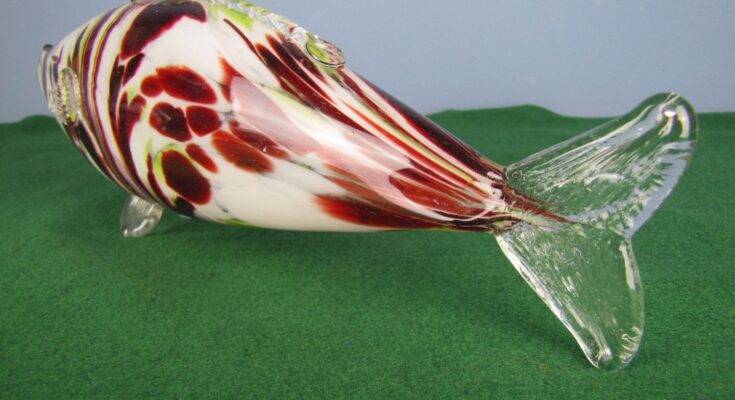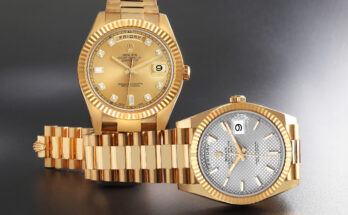What Is Murano Glass?
Creating A Murano Glass Sculpture In A Factory In Murano, Italy
Murano Glass, known for its exquisite beauty and craftsmanship, has captured the hearts of art enthusiasts and collectors worldwide. Originating from the island of Murano in Venice, Italy, this unique form of Glass artistry has a rich history that dates back to the first millennium AD. As its popularity continues to grow, so does the presence of imitation pieces flooding the market. Determining the authenticity of Murano Glass can be a daunting task. However, with a keen eye and knowledge of the distinct characteristics, you can learn to quickly determine whether a piece is genuine or not. In this article, we will delve into the world of authentic Murano Glass, explore its fascinating history, understand its manufacturing process, and unravel the key features that distinguish genuine Murano Glass from its imitations.
Brief History of Murano Glass
Ancient View Of the Grand Canal In Venice, Italy
The history of Murano Glass is intertwined with the captivating story of Venetian artistry, the technical know-how of the local artisans, and their drive toward innovation. The origins of this exquisite craft can be traced back to the Roman settlers of the Venetian lagoon. Running from the barbarian invasions, they established a small commune near present-day Venice and used their glassmaking skills to create basic utility glassware. The craft kept evolving in the area and in the 13th century glassmakers from Venice were relocated to the island of Murano by government decree. The move was intended to prevent fires caused by the glass furnaces from spreading to the main city. This act inadvertently led to the birth of Murano Glass as a distinct art form.
Murano Glass gained immense popularity across Europe and beyond in the centuries that followed. The glassmakers of Murano were revered for their unparalleled skill and mastery of techniques such as Murrina aka Millefiori, Filigree, Bullicante, or Latticino. These artisans transformed glass into magnificent creations, ranging from delicate chandeliers and decorative vases to intricate jewelry and ornate mirrors. Murano Glass became a symbol of luxury and refinement, attracting patrons and collectors from all corners of the world.
If you visit one of the grand European estates today you will undoubtedly see Murano Glass chandeliers, mirrors, and many decorative vases and sculptures used in the interior design. A timeless statement of elegance, Venetian Glass was valued for its translucency, weightless appearance, and functional superiority.
Manufacturing Process
Creating An Element For A Murano Glass Chandelier In A Factory In Murano, Italy
The production of Murano Glass is an intricate and labor-intensive process that requires a high level of skill and precision. The furnaces, known as “fornace” in Italian, play a central role in the manufacturing process of larger Murano Glass objects. These furnaces are fueled by gas, providing the intense heat required to melt the raw materials and shape them into the desired forms. The furnaces burn 24 hours 7 days a week and only get extinguished for the month of August when the glass masters take their annual break.
Some smaller items like figurines and beads used to craft jewelry are not made in the furnaces. The masters shape them from special Murano Glass canes under a small flame using a method called “a lume” or lampworking. These canes in hundreds of colors are produced by only one Company on Murano Island called Effetre. Effetre is privately owned and very selective in who they work with. Hence, they sell their products only to reputable Murano artisans.
Murano Glass is crafted using a blend of silica, soda ash, and lime, along with various mineral additives that impart color and texture. The glassmakers, also known as “maestri,” manipulate the molten glass using traditional hand tools and techniques passed down through generations. Each piece undergoes meticulous shaping, blowing, and reheating to achieve the desired form and intricate details.
Murano Glass is exclusively produced on the island of Murano, located in the Venetian Lagoon. This geographical restriction is a crucial factor in determining the authenticity of Murano Glass. The glassmakers of Murano have carefully guarded their techniques and trade secrets for centuries. Even today, when their methods are mostly out in the open, it is important for the artisans to work on Muurano island. Murano has the concentration of raw materials, creativity, and skills not available elsewhere, which ensures that the true essence of Murano glass remains rooted in its birthplace.
Distinct Features of Authentic Murano Glass
Recognizing the key features of authentic Murano Glass is essential when distinguishing it from imitations. Here are some notable characteristics to look for:
- Trademark or Label: Many Genuine Murano Glass items bear an adhesive label that indicates their origin with the words “Vetro Artistico Murano”. This is the label of the Promovetro consortium of select Murano Glass factories. Many other Murano pieces created by non-members will have an etched signature of the master or the name of the factory attached that you can independently verify.
- Imperfections: Unlike mass-produced imitations, Murano Glass exhibits slight imperfections that testify to its handmade nature. Look for small bubbles, asymmetry, or irregularities in the surface or shape. Far from being defects, these very features indicate the authenticity of the piece.
- Colors and Patterns: Murano Glass is renowned for its vibrant colors and intricate patterns. Genuine pieces often feature rich hues, including deep blues, vibrant reds, and striking greens. Many will have special design features, such as millefiori flowers or bullicante bubbles. These testify to the high level of skill and special craftsmanship techniques characteristic of Murano.
- Glass Quality and Translucency: Another characteristic of authentic Murano Glass is its translucency. When held up to the light, genuine Murano Glass allows light to pass through, revealing its clarity and purity. This feature distinguishes it from imitations, which may appear cloudy or have a lower level of transparency.
- Design and Texture: Authentic Murano Glass often features exquisite shapes. Animal, plant, and human forms are crafted with utmost skill and ability resulting in a very lifelike appearance. This is in marked contrast to imitations, many of which are quickly bent into barely recognizable shapes. Imitations always show lower craftsmanship and quality.
- Price: While price alone cannot determine the authenticity of Murano Glass, it can provide some insights. Authentic Murano Glass is a result of skilled craftsmanship and meticulous attention to detail, making it a valuable and highly sought-after art form. Therefore, genuine Murano Glass pieces are usually priced much higher than mass-produced imitations. If an item is suspiciously inexpensive or being sold at a bargain, it is possible that it is not authentic.
Shopping for Authentic Murano Glass:
When shopping for an authentic Murano Glass object, there are several specifics to pay attention to:
- Reputation and Certification: Purchase from reputable dealers on Murano Island or online to ensure the authenticity of the piece. Look for established stores or websites that specialize in Murano Glass and have a track record of dealing with genuine products.
- Origin Verification: Check if the piece comes with a certificate of authenticity or a label that verifies its Murano origin. These certificates provide assurance that the glass item is genuinely crafted in Murano.
- Craftsmanship and Detail: Examine the craftsmanship and attention to detail. Genuine Murano Glass items showcase lifelike forms, intricate designs, precision in execution, and a high level of artistry. Look for fine details, well-defined patterns, and overall high-end craftsmanship.
- Documentation and Signature: Some renowned Murano glassmakers sign their creations as a mark of authenticity and quality. When shopping for larger art glass pieces, look for a signature or initials etched or engraved into the glass, indicating the work of a skilled maestro.
- Expert Assistance: If you are unsure about the authenticity of a piece, seek advice from experts in the field of Murano Glass. They can provide guidance and authenticate the piece based on their knowledge and experience.
- No Sales Pressure: Many tourists come to Murano island as part of organized “free” tours or by themselves only to be lured into a showroom. Not knowing much about Murano, they become easy prey for unscrupulous salesmen many of whom pedal fakes. Avoid any free tours and leave any place where you feel coaxed into buying. Murano is full of legitimate stores and sellers who are willing to help and explain without exerting any pressure on you.
Why It’s Important To Buy Authentic
Authentic Murano Glass On Display In A store In Murano, Italy
Murano Glass stands as a testament to the artistry and creativity of generations of glassmakers from the island of Murano. Its exquisite beauty, vibrant colors, and intricate patterns have captivated art enthusiasts worldwide. When you buy a genuine Murano piece you buy not only a beautiful object. You get to own a part of the Venetian artistic heritage and become an important link in the chain of continuation of the ancient Murano Glass artistic tradition.
However, with the increasing number of imitations in the market, distinguishing genuine Murano Glass from counterfeits has become more challenging. The fakes not only confuse buyers and cheat them but also make Italian Murano Glass artisans go out of business by creating unsustainable price pressure. Italian government along with European Union leaders have long been searching for ways to protect historic crafts such as Murano glass-making. Previous attempts at prosecuting the fake peddlers have not been systematic or frequent. However, there is finally good news. The European Government just agreed on a broad protection framework for ancient European crafts, including Murano Glass. Hopefully, soon the burden of identifying authentic products will be lifted off the shoppers and placed on the governments instead.
Conclusion
In the meantime, by familiarizing yourself with the specifics of Murano Glass, learning about its distinct features, and understanding the manufacturing process you can minimize the chance of buying a counterfeit object. Make sure to always shop from reputable sources and avoid excessive sales pitches, especially when visiting Murano Island.
Once you buy a piece and display it in your home, you may realize that you are mesmerized by it. The play of light and colors, the translucency, and the beauty of authentic Murano Glass vases, sculptures, and various other decorative objects will make you want to buy more. Embrace the allure of this timeless art form, and embark on a journey of collecting exquisite treasures crafted by the maestri of Murano.




